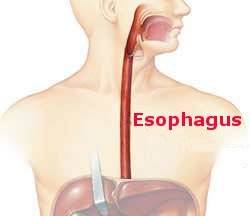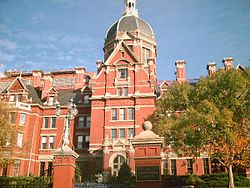History
This is the first of a series of blogs on Thoracic Surgery and Thoracic Surgeons. Eventually I’ll get to the story of the development of this surgical specialty, discuss the current state-of-the-art, and review the role of thoracic surgeons in the treatment of such diseases as lung cancer and cancer of the esophagus. I am starting, however, with clarifying some relevant terminology and identifying medical advances which were prerequisites for thoracic surgery to begin. The thorax is the anatomical designation for the chest so thoracic surgery identifies operations on organs inside the chest and the people performing these procedures are thoracic surgeons. The earliest manifestations of chest surgery were for infection either of the lung itself or within the chest cavity but outside the lung (called empyema). It is claimed that Hippocrates himself treated a patient by cutting between a patient’s ribs to let pus drain out and then sticking a rag through the opening, allowing drainage to continue but preventing air from entering the chest cavity and collapsing the lung. This is perhaps an apocryphal story but one which reveals the early possibility of surgical intervention for chest pathology (and Hippocrates’s cleverness).
Developments
The ability to perform true thoracic operations had to await several developments outside the surgical arena. One was the ability to anesthetize the patient. Although some operations were performed with muscular assistants restraining the patient but without the benefit of true anesthesia although a shot of whiskey or laudanum (a narcotic) presumably helped. Leg amputation was perhaps the most frequently performed early operation and had to be an excruciating experience but survivable as the best surgeons could lop off a leg in only a few minutes. Tolerating having one’s chest cut open for any operation would exceed any patient’s stoicism. This situation was resolved when ether was introduced into use in the middle of the 19th century and eventually superseded by the panoply of intravenous and gaseous anesthetics that are available today.
The other necessary advance was developing a method to breathe for the patient when the chest was opened. The environment inside the chest is essentially a vacuum. When the chest expands the lung is pulled outward and air is sucked into the windpipe (the trachea) and lung. When an incision is made, the chest is open to the outside air, the vacuum is lost and the patient can’t breathe. Not a tolerable scenario. An early solution developed in Austria by Sauerbruch recreated the normal breathing physiology by placing both patient and surgeon in a large box and generating a vacuum. This kept the lung expanded and the patient continued to breathe as his head protruded outside the box through a hole in the side. The photo shows an example of this box. 
This complicated apparatus actually worked and was used for a short time in Europe and America but was superseded by a much more reasonable alternative in which a tube is guided through the mouth and into the trachea. Oxygen and anesthetic gasses are pushed into the lung under positive pressure and this endotracheal method has been the standard of care for many years and is used for all operations requiring general anesthesia, not just those on the chest.



